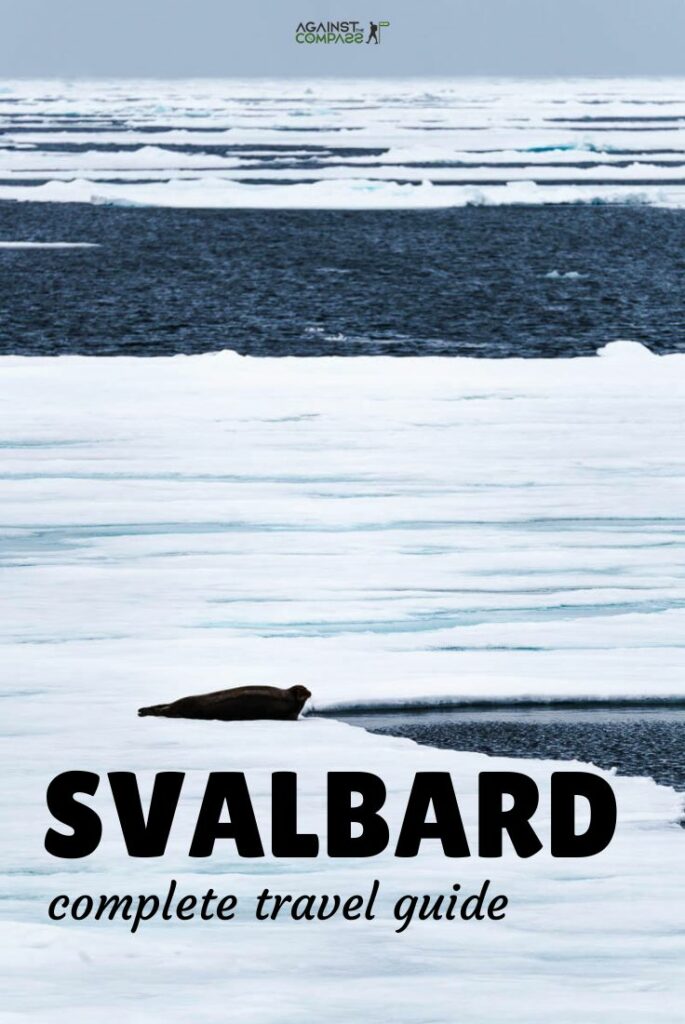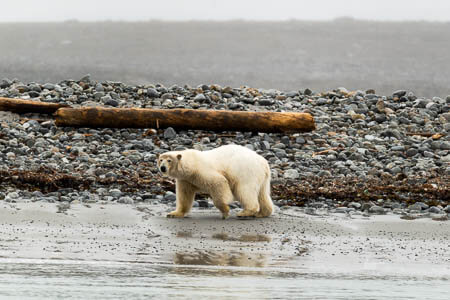2 Comments
Last updated on October 30, 2024
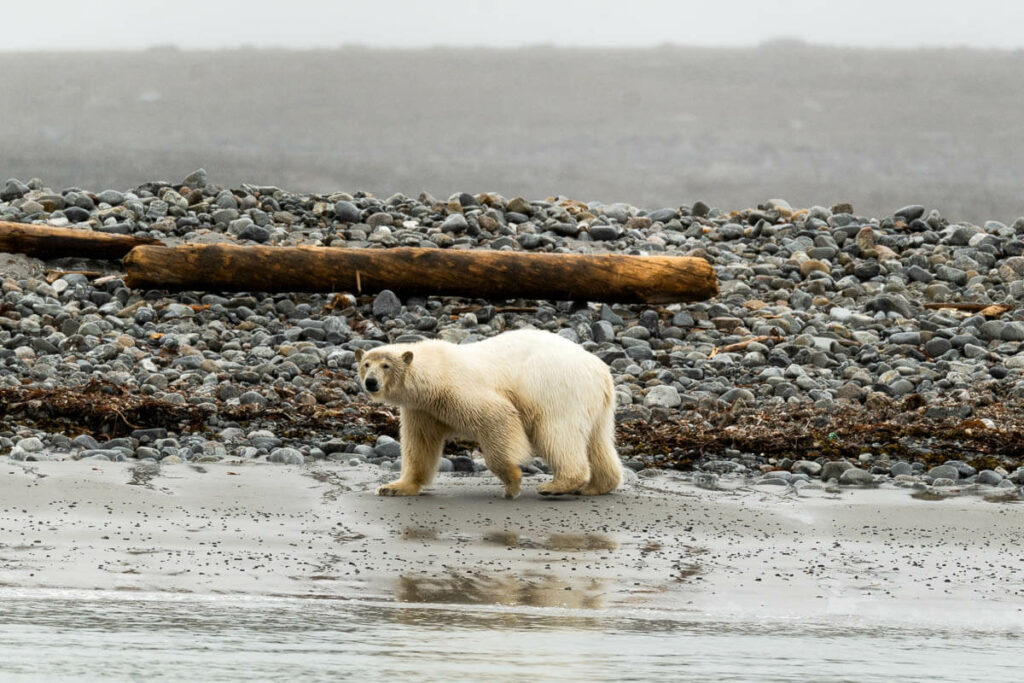
Of all the remote, barely inhabited regions and islands in the Arctic Circle, Svalbard might just be the most accessible.
Located at 78º north, this archipelago is an Arctic desert made up of captivating tundra landscapes offering truly amazing hiking opportunities, and the chance of seeing polar bears.
From a nature perspective, this is probably the best trip I’ve ever done.
This post is a comprehensive travel guide to Svalbard, and contains everything you need to know about how to get there, where to stay, activities, cruise expeditions, prices and more.
By the way, I know that this sort of trip differs from all the original content on this site, which has always focused on places like Yemen, Syria, Mauritania or Kazakhstan but ultimately, we focus on remote and barely visited destinations, and Svalbard fully fits the bill.
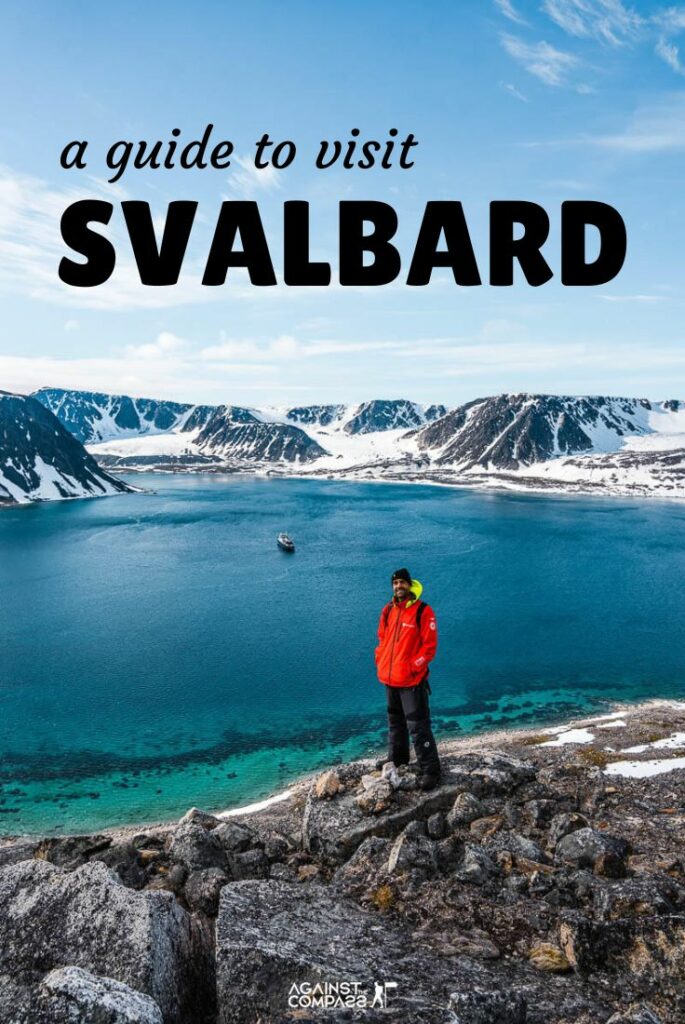
In this travel guide to Svalbard, you will find:
our recommended travel insurance for Svalbard
With its Backpacker plan, IATI Insurance is the best insurance for any kind of adventurous destination, like Svalbard.
🇸🇯 Introduction to traveling to Svalbard
Svalbard is an Arctic archipelago that technically belongs to Norway, even though it’s significantly closer to the North Pole than it is to the Norwegian mainland (650km vs 930km respectively).
Svalbard belongs to Norway but it has a special status
Svalbard falls under Norway’s sovereignty, as recognised by the Svalbard Treaty of 1920.
However, according to the treaty, not all Norwegian laws apply in Svalbard.
For example, any country is free to engage in scientific, commercial or industry activities within the archipelago, and anyone can travel there visa-free and stay for as long as they want, even if they don’t have a job.
Is it Spitsbergen or Svalbard?
Spitsbergen is the original name, given by the Dutchman who discovered it in 1596.
When the archipelago became part of Norway in 1920, they renamed it to Svalbard, a term that appeared in old Icelandic Viking texts.

Regular people live in Svalbard
The inhabitants of Svalbard are just normal people from around the world trying to make a living.
It’s not only scientists, but also doctors, teachers, policemen, plumbers, tour guides, bar tenders and basically, the kind of people you would find in any other small-sized town.
There are no indigenous people from Svalbard
Unlike other Arctic regions across Russia, Greenland or Canada, there is no evidence of the existence of an indigenous community in Svalbard, not even in the ancient Viking texts.
Today, Svalbard is inhabited by people from all over the world, mainly Europeans, Russians and a large Thai and Filipino community.
There are different settlements in Svalbard
Despite its remoteness, Svalbard has a few towns or settlements.
Longyearbyen is the largest town, home to around 2300 people. It’s a proper town where you find supermarkets, shops, schools, a museum and even fine-dining restaurants.
The second largest settlement is Barentsburg, mostly inhabited by Russians and Ukrainians.

It’s illegal to be buried in Svalbard and women are technically not allowed to give birth there
People are not allowed to die in Svalbard due to permafrost, which is a frozen layer under Svalbard’s surface that prevents bodies from decomposing.
Meanwhile, hospitals in Svalbard are not fully prepared for delivering babies, even though they will of course help in case of an emergency.
Svalbard is a frozen desert
There are no trees in Svalbard, and there is so little vegetation that starvation is the main cause of reindeer deaths.
Svalbard is a desert in its purest state, albeit a very beautiful one.
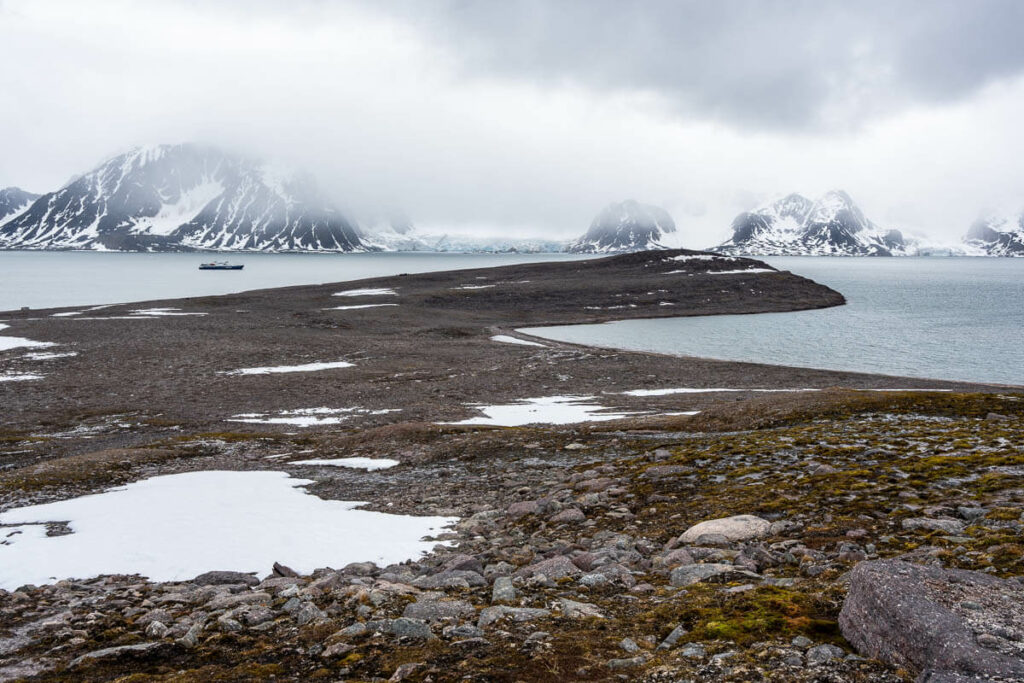
Are there really more polar bears than people?
People in Svalbard will always sell you the idea that Svalbard is land of polar bears, and that there are more polar bears than people living there.
Nevertheless, this isn’t very accurate.
While it’s true that there’s a large population of polar bears living across the islands, nobody knows the exact numbers, plus they keep moving and migrating across other parts of the Arctic, in Russia, and the icepack that surrounds the North Pole.
More on polar bears in the Polar Bear section.
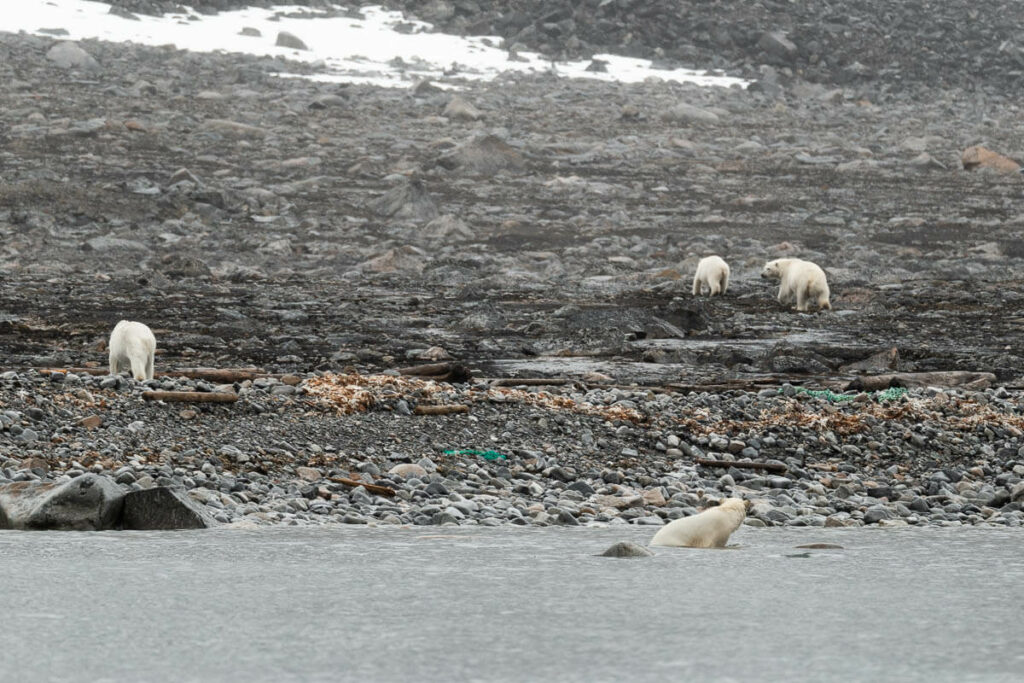
🚑 Travel insurance for Svalbard
Don’t travel to Svalbard without travel insurance. I recommend IATI Insurance because:
- So many different plans for all budgets, including specific plans for backpackers
- Coverage for up to 1-year trips, perfect for overlanding around the Stans
- Readers of this blog can get a 5% exclusive discount
🪪 How to get a visa for Svalbard
Technically, the region of Svalbard belongs to Norway but, according to the Svalbard Treaty signed in 1920, they are not allowed to discriminate between nationalities, meaning each and every person is allowed to visit Svalbard without a visa and stay for as long as they want.
This means that Svalbard might be the only inhabited region in the world where all nationalities can travel visa-free.
However, remember that they aren’t part of the Schengen zone, so EU citizens and even Norwegians will have to carry their passports when traveling to Svalbard.
Information for citizens of India, Pakistan, Venezuela and other nationalities that require a visa for Europe Keep in mind that all flights to Svalbard depart from Norway, and that your airline might require you to have a valid visa for traveling to Norway, even for connecting flights.
⏱️ How much time do you need to visit Svalbard?
I personally spent 11 days in Svalbard: 3-4 days in Longyearbyen, and 7-8 days on a cruise ship.
If you don’t have the budget and/or time to go on a cruise, staying in Longyearbyen for a few days is a great way to get a good sense of what it’s like to be in the Arctic.
There should be enough tours and activities to keep you busy for 4-5 days – more on that in the Things to do section – but remember that tours are expensive (averaging €200 for any day trip); so is the food and accommodation. Also, there’s nowhere to go on your own outside of Longyearbyen, so you always have to book a tour.
During my stay in Longyearbyen, I did a full day’s hike, and also booked the boat tour to the Soviet settlement of Pyramiden. I used the rest of the time to chill or just walk around Longyearbyen.
On my fourth day in Longyearbyen, I embarked on a ship that took me to the far north of Svalbard, on the island of Nordaustlandet.

🛫 How to get to Svalbard
Today, the only way to travel to Svalbard is by plane.
There are also certain cruise ships departing from Greenland, Scotland and Amsterdam, although there aren’t any passenger ferries as such.
The main settlement in Svalbard is called Longyearbyen, home to Svalbard Airport (LYR).
How to get to Longyearbyen: today, only 2 airlines fly into Svalbard: Norwegian and SAS, always connecting from either Oslo or Tromsø.
🌤️ Best time to visit Svalbard
You can travel to Svalbard at any time of year, including during the long and dark winter months. Here’s what you need to know season by season.
Traveling to Svalbard in winter (November – February)
During the winter months, Svalbard gets as cold and dark as it sounds.
From mid-November to the end of January, the whole island is in complete darkness for 24 hours a day, a natural phenomenon known as polar night.
This is a great time for seeing the northern lights, as well as doing snow-related activities such as snowmobile excursions or dog-sledging.
On the other hand, winter isn’t great for spotting wildlife or visiting remote parts of Svalbard, since cruise ships can’t break through the ice.
Funnily enough, winter is the favorite season for locals, the reason being that they have more freedom when it comes to mobility. There are very few roads in Svalbard, but the winter snow allows them to move around on their snowmobiles, while in summer, they’re all trapped in Longyearbyen.
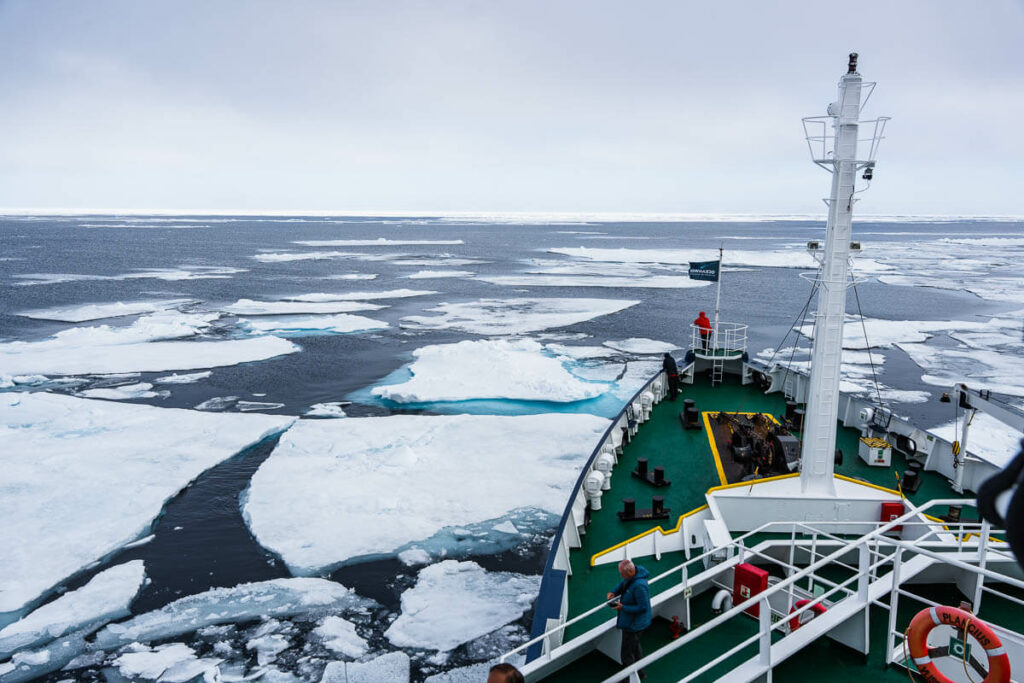
Travel to Svalbard in summer (June – mid-September)
While polar nights might sound intriguing to some, nothing can beat polar days and 24-hour sunshine.
Leaving a bar at 12:30 am in Longyearbyen while getting blinded by the brightest sun is something you have to experience at least once.
What’s more, summer is the best time for seeing wildlife and hiking, as well as the only time of the year when cruise ships operate here.
I traveled in Svalbard from June 24th to July 4th.

Traveling to Svalbard during the rest of the year (March to May and mid-September to October)
During the shoulder season, you can enjoy a bit of everything, depending on which month and time of the year you come.
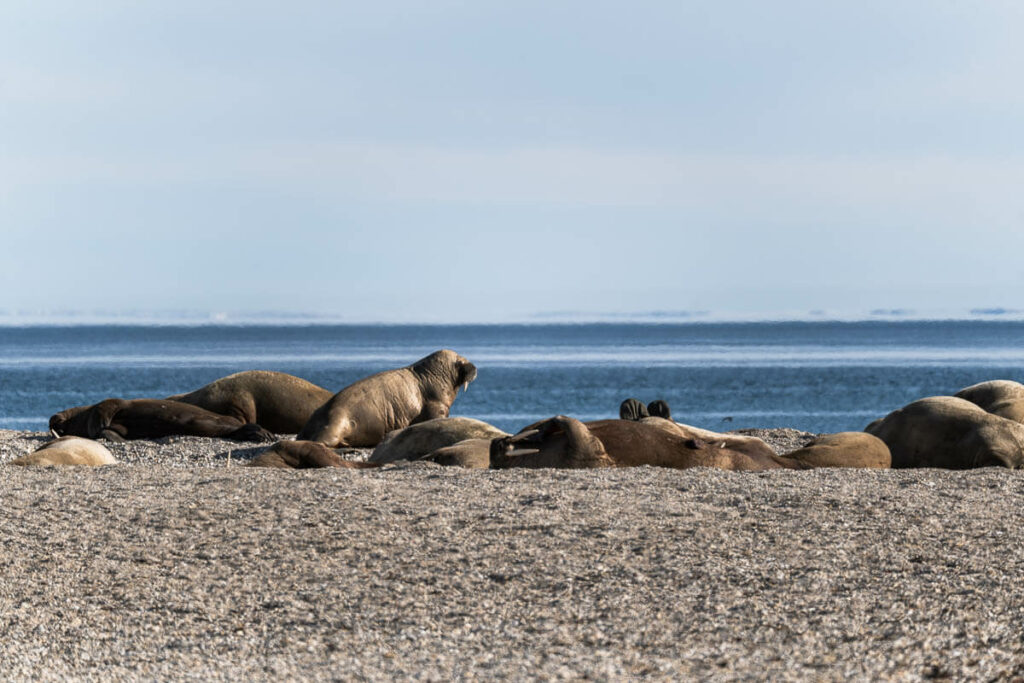
🚌 How to get around Svalbard: Transportation
The only available public transportation in Svalbard is the bus that takes you to and from the airport; that’s it.
Longyearbyen is a spread-out town, so there are a couple of taxis, and you may need one depending on where you stay.
To get out of Longyearbyen, you will have to book a tour and for those, transportation is always provided, either by boat or snowmobile.
🏨 Where to stay in Svalbard
Longyearbyen has a few places to stay, including a budget hostel for backpackers, where I actually stayed.
I strongly recommend booking your accommodation well in advance.
Backpacking budget: Gjestehuset 102. The cheapest option in Longyearbyen. A cozy hostel but far from town, almost 3km from the center.
Budget: Coal Miner’s cabins. Located right next to the hostel. If there are 2 of you, the price of a double room is the same as 2 dorm beds.
Mid-range: Svalbard Hotell | Polfareren. Very nice hotel in the center of Longyearbyen, if your wallet permits, of course.
Top-notch: Funken Lodge. Probably the best hotel in town, but $$$$.

🍲 Shopping and food in Svalbard
As previously mentioned, Longyearbyen is a regular town with a variety of shops, including a modern supermarket, pharmacies and different clothing stores selling high-quality winter clothes.
Shopping in Svalbard, nevertheless, is expensive, so best stock up on winter gear back in your home country.
When it comes to food, Svalbard is well sorted for restaurants too, including high-end eateries.
Local specialities include seal, whale and reindeer meat.
However, travelers looking to venture into this controversial cuisine may be disappointed that all that meat is actually imported from the Norwegian mainland, since Svalbard doesn’t have the facilities and infrastructure needed to carry out the respective quality controls.
Regarding restaurants, we did try dried seal in Vinterhagen and enjoyed some fish in Kroa. We also tried the restaurant at Coal Miners, which mostly has international cuisine. The capital also features Thai and Mexican restaurants. There’s a local brewery too called Svalbard Bryggeri AS.

💻 Internet in Svalbard
The internet in Svalbard is extremely fast and reliable, despite the region’s remoteness.
They operate under Norway’s mobile network, so EU SIMs can be used there at no extra charge.
Wi-Fi is incredibly fast, as well, and it’s available in pretty much all hotels and bars.
Get a VPN for traveling in Svalbard
You should always use a VPN when you travel, especially when you connect to public Wi-Fi networks.
Your connection will be much safer.
I recommend ExpressVPN – Extremely easy to use, fast and cheap.
If you want to learn more about VPN, check: Why you need a VPN for traveling.
💰 Money and budget
The Norwegian Krone (NOK) is used in Svalbard, and approximately:
1 USD = 11 NOK
Everything is quoted in NOK but most businesses won’t accept cash, only debit or credit cards.
How much does it cost to travel in Svalbard?
Svalbard is pretty expensive. In fact, this is one of the most expensive places I’ve ever been. Here are prices for the most typical things;
- Accommodation: from 1000 NOK for a double room
- Food: from 300 NOK for a main meal
- Drinks: from 100 NOK for a pint of beer
- Tours: from 2000 NOK for a day tour
- Flights: around €450 return from Oslo/Tromso
- Cruise: from €3800 for an 8-day tour
🐻❄️ Polar bears in Svalbard
All travelers visiting Svalbard hope to see polar bears, but not everyone gets to see one.
Most polar bears live in the northern parts of Svalbard, and they are rarely seen in the area around Longyearbyen. They do pop in from time to time, but the chances of travelers spotting one are slim.
If you are only staying in Longyearbyen, your best chance of seeing a polar bear will be on the day tours that go by boat -although even then, in the unlikely scenario you should spot one, it would likely be from a good distance.
Unfortunately, the only way to properly see polar bears is by taking a multiple-day cruise.
On our cruise we did see 4 polar bears, one of them from relatively close up, walking along the shore approaching our zodiac.
It was absolutely amazing but it’s important to remember that Svalbard is an stunning destination even without polar bears, so don’t ever get frustrated if you don’t see one.

Is it safe to travel to Svalbard? Polar bears and safety
Polar bears are cute but everyone knows how dangerous they are, with their taste for human flesh.
There’s been a lot of fatal incidents involving polar bears and tourists.
I mean, why can’t you just go hiking on your own?
The answer is polar bears.
When heading outside of Longyearbyen’s perimeter, you must always be accompanied by a local guide or a person who is certified to carry a rifle. That’s what local people always do: they always carry their rifle wherever they go outside of their settlements, with no exception.
This doesn’t mean they shoot the first polar bear they bump into, as the law dictates you can only use your gun as a last resource, when you feel your life is in danger, e.g., the polar bear is too close and ready to attack.

🏛️ Things to do in Svalbard
There are lots of places to visit in Svalbard. Here’s a short list:
Longyearbyen
Throughout this travel guide to Svalbard, we’ve mentioned Longyearbyen a lot.
It’s the capital of Svalbard and any traveler’s first introduction to the Arctic, good to visit for half a day.
The center of town houses a museum that showcases the country’s history, which mainly relates to the many explorers that have set foot on the archipelago over the last couple centuries.
There’s a quirky church worth seeing and less than 2km east – around here – there’s a lake featuring the world famous warning sign with a polar bear.
Other than that, I also found it interesting to walk around town and see what life is like for people living in such a remote area.
By the way, in the center you can also find the northernmost post office in the world, which you can send a postcard back home.
Pyramiden
Pyramiden is an abandoned Soviet coal mining town that operated from 1910 to 1998.
Today, it has become a tourist attraction and is one of the most visited places in Svalbard.
This mining town used to host around 1000 people, housing a theatre, an abandoned swimming pool, a 24-hour cantina, a library, a school and of course, the northernmost Lenin statue. You can still visit all of those sites.
Today, there are a few people still living in Pyramiden to help maintain the place.
There’s a café where you can get Russian beer, vodka and Russian snacks.
Pyramiden was one of the highlights of my trip to Svalbard.
You can book it here.
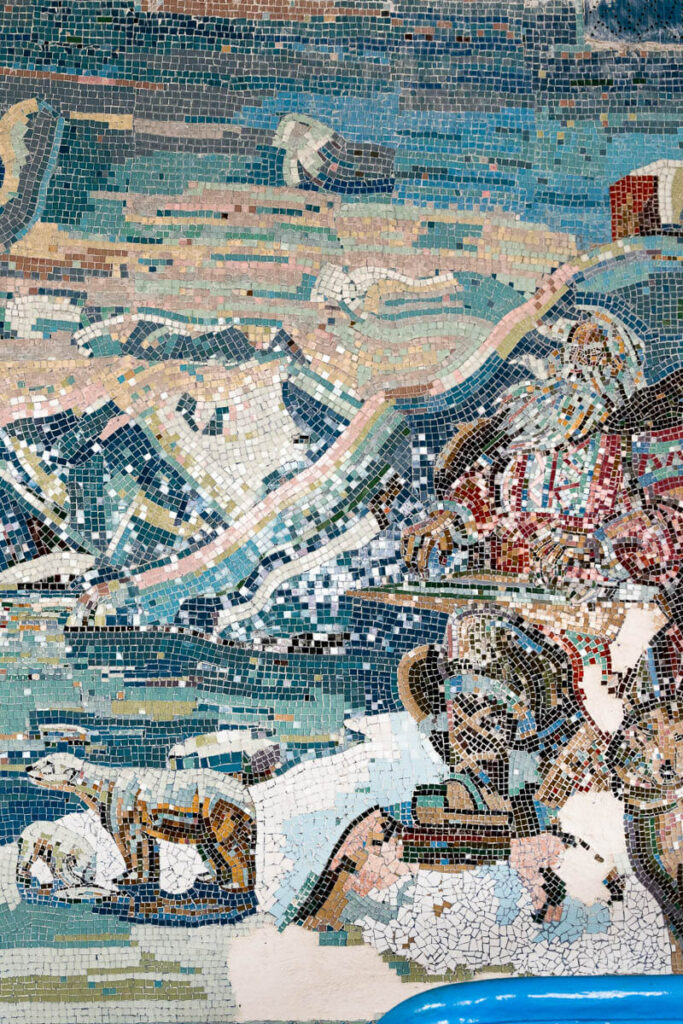

Hiking the Hiorthfjellet summit – The Arctic Challenge
A pretty challenging hike in Svalbard, locally known as the Arctic Challenge.
To summit Hiorthfjellet (928 meters), you first have to kayak across the fjord for 4 kilometers, climb the 928 meters, and then kayak back to Longyearbyen.
The whole activity takes around 11 hours.
It’s pretty tough, but I recommend it for intrepid hikers.
You can book it here.
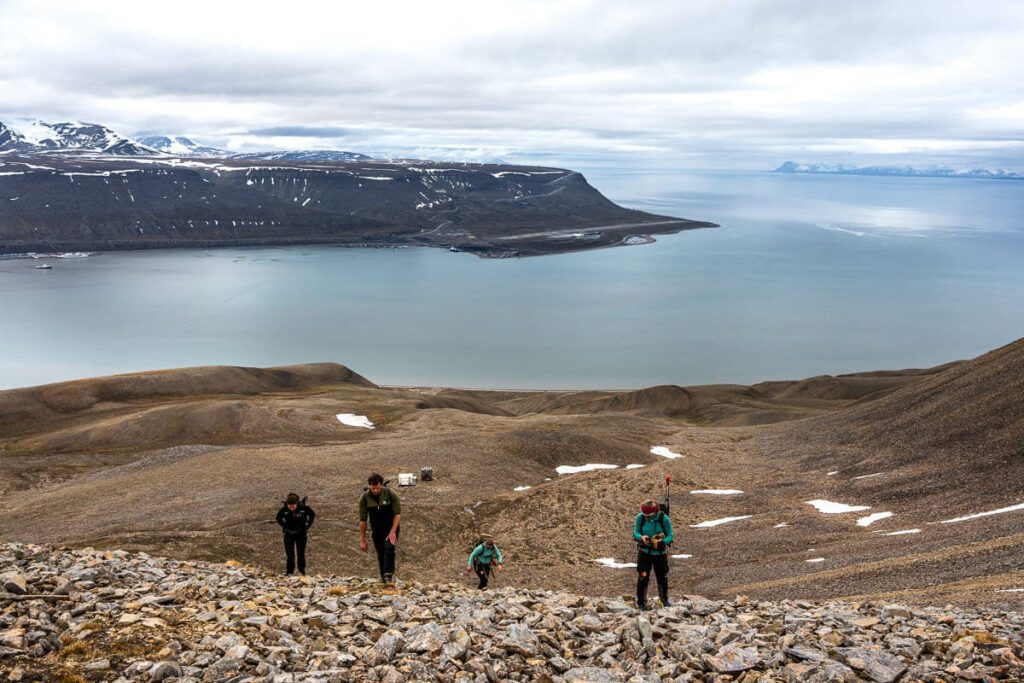
Barentsburg
If I’d had another day in Svalbard, I would have gone to the Russian town of Barentsburg, just to see how it differs from Longyearbyen.
Barentsburg also features these 2 hotels:
More things to do in Svalbard
There’s a wide array of activities to choose from for both winter and summer.
I booked my tours through a local company called Discover Svalbard.
Just go to their website and browse all the available tours they offer.
🛳️ How to book a cruise ship in Svalbard
When I traveled to Svalbard, I booked an 8-day cruise expedition.
For this, I paid €3800 for a bed in a 4-bed compartment with 3 friends of mine.
The company was called Oceanwide Expeditions.
Please note that I’m not specifically advertising them, just offering some free information.
Why did I choose this company?
Well, I didn’t really choose it, my friends did and I just tagged along.
The ship had a capacity of 108 passengers. You can find ships with a lower capacity but the price will obviously increase significantly.
Things I liked about my cruise expedition:
- All of the guides had a scientific background with vast experience in the Arctic, and they always gave us presentations based on the things we saw and visited.
- They kept us busy with different activities, including 2 landings a day, which usually involved a 2-hour hike each time.
- Sailing up to 81º north, just at the edge of the ice pack and no more than 500km from the North Pole. This wasn’t mentioned in the program.
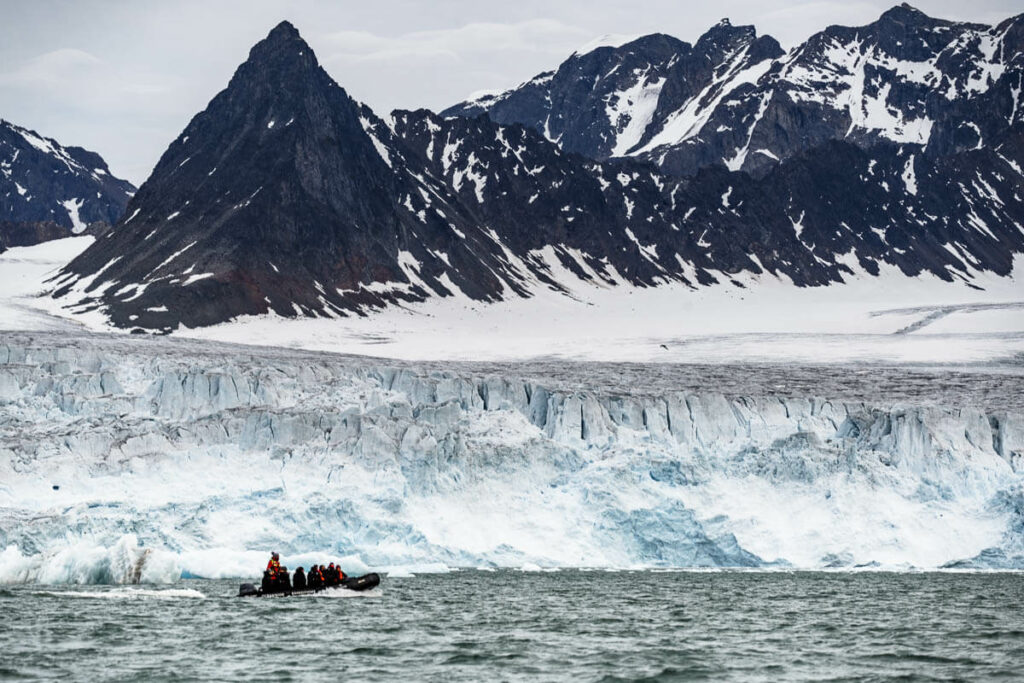
In the following map, you can see all the places we visited.
Overall, we were very happy with the tour/trip but I am not really an expert on cruises, plus I don’t have anything to compare it to, especially as I never did any research into it.
However, based on my humble experience, these are the things you should look for when choosing the best cruise expedition in Svalbard
- Boat capacity. Ours held 108 passengers. It was OK, I wish there had been fewer people but it wasn’t that bad. Some cruise ships can have double and even triple capacity , and I strongly encourage you to stay away from these.
- Itinerary. Choose a cruise that heads north. On our boat, there was a guy who had previously done the southern part of Svalbard and he said that the north was far more stunning.
- Price. If you are budget sensitive, some cruise ships like ours have 4-bed compartments, which you can share with other random travelers.

Conclusion: Is Svalbard worth visiting?
During my trip to Svalbard, we sailed up to 81º north, right to the edge of the ice pack that surrounds the North Pole.
On the way, we saw 4 polar bears, one of them pretty close. We also went on-shore multiple times, climbing small peaks that offered us jaw-dropping Arctic views.
We experienced the Arctic silence, and being in such a remote, desolated, yet, absolutely stunning area felt amazingly good.
We visited a Soviet mining town, saw many walrus, and 3 seals sleeping on the ice.
All of this was shared with good friends and fantastic weather.
Was Svalbard worth visiting, despite the high price tag?
Oh yes, absolutely, it was worth every penny I paid. We’ve still to meet someone who hasn’t had an amazing time in Svalbard.
